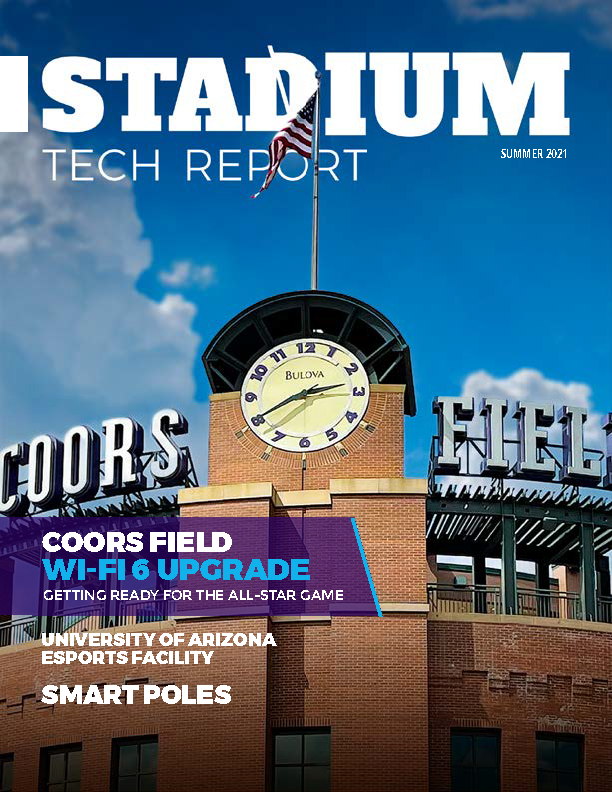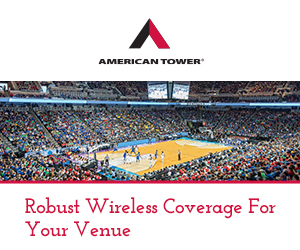Last month we had the great fortune to be invited to the SEAT Conference, which has to be the premier gathering of sports and entertainment facility technology professionals. Over two and a half days we heard many stories of early experiences with technologies like Wi-Fi, DAS, CRM and digital signage, and we left incredibly impressed with both the level of detail and honesty shared at the event.
Quite simply, if you are in the stadium technology business and want to learn what’s happening at the cutting edge, you should put SEAT on your agenda every year, just like all the reps from the biggest stadiums and arenas who make it a regular stop. (Follow this page to find out where and when SEAT 2014 will happen.)
While we are still working on putting together some of the detailed stories from SEAT participants for our Fall technology report, what we can share right now are some overall lessons learned from both the great panel discussions as well as via hallway chats and discussions during the evening events at SEAT. The top three takeaways I had were: stadium Wi-Fi ROI is elusive; you need to plan big for DAS deployment; and stadium apps are still a work in progress.
Apps: Still at the Starting Line
If I move backwards through that list, I can pretty confidently say that the reason many stadium apps are still at the starting line has mainly to do with a lack of deployed infrastructure. Even at facilities where Wi-Fi has been in place for several years, stadium apps both from teams and leagues are mainly just offering basic information and connectivity. The grand dreams of ordering concessions via mobile devices and having them delivered is still a future fantasy for all but a select few facilities now, mainly because most facilities are still just getting their hands around operating a public network.
Wi-Fi ROI: Elusive
And without apps that are tested in live networks, it’s hard to show any bottom-line ROI for Wi-Fi deployments. It’s a real chicken and egg problem, especially now that major cellular carriers are backing away from helping to finance Wi-Fi in favor of paying for DAS deployments. For the most part, stadiums are going to be on their own when it comes to paying for Wi-Fi deployments, since any benefits of putting in such a network will eventually go straight to the team. But that might not happen in a big way until more apps arrive. While pretty much everyone in attendance at SEAT was in agreement that Wi-Fi is going be as necessary and as basic as liquid plumbing, it’s largely a faith-based argument right now.
DAS: Plan for Space
That leads us to DAS, aka Distributed Antenna Systems, which are being deployed just about everywhere mainly because the large cellular carriers (AT&T and Verizon) are paying most of the bills. If there has been a strategic shift in the stadium business the past year it has been the wireless carriers’ change in emphasis from Wi-Fi offload (where Wi-Fi is used to supplement cellular coverage) to DAS, which brings true cellular connectivity to an array of small antennas spread throughout a facility.
There’s a lot of interesting technical and business nuances around DAS, including whether or not a neutral third party should build and host the network. We’ll be covering these issues in much greater detail going forward, because of their immediate and considerable bottom-line impact. But the biggest takeaway we had from DAS had to do with physical space — as in the space needed to host all the DAS equipment on site. Bottom line: You are going to need a lot of room for DAS. (AT&T antenna group guru Chad Townes showed us pictures of the DAS equipment room at the Dallas Cowboys stadium, and it looked like something out of the Matrix — a huge room completely filled with servers and telco gear.)
Why does DAS take up so much room? Basically for every carrier — think Verizon, AT&T, Sprint and T-Mobile — you need to install, on site, a separate cellular base station, with all the networking gear to handle call ideintification and authentication. Then there is more gear to simply manage the connections in all the antennas, plus gear to connect all that to the public networks. And lots and lots of power and air conditioning to keep everything cool.
So how much space do you need? Estimates ranged from 5,000 square feet (about the size of a hotel ballroom) to just a bit smaller. Some facilities said they were putting DAS in buildings nearby, using fiber to connect those buildings to the stadium. But the big takeaway seemed to be, whatever space you think you need for DAS, you probably need more.
Look for more info on these topics in our upcoming Fall technology report. Best way to know when that comes out? Sign up for our email list, via the button in the upper corner of the home page.







[…] the same thing for the NFL, but as we reported earlier the league badly lags in developing and delivering the hardware, networking and apps needed to be at the forefront of the convergence of sports and […]